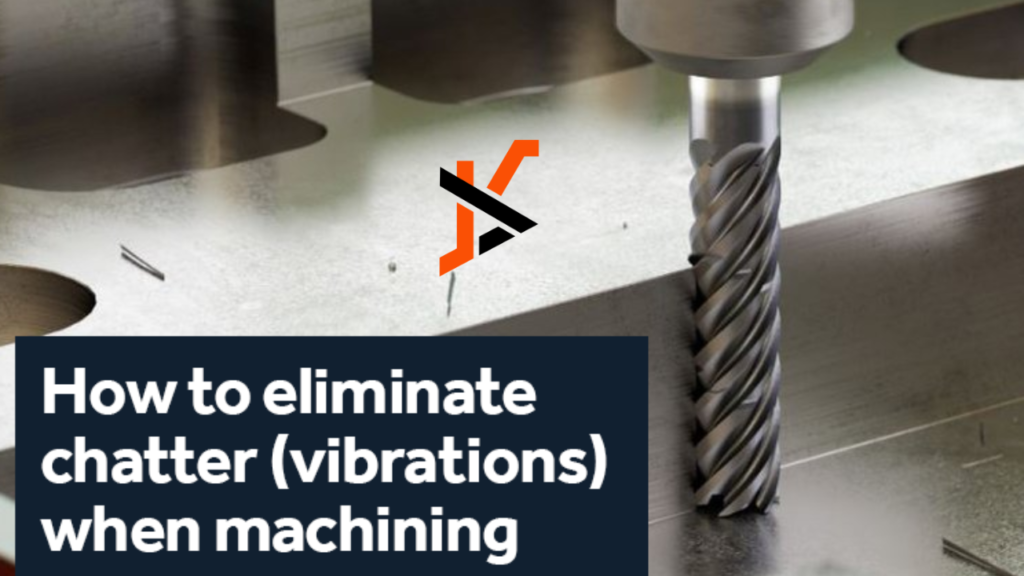Vibration during machining operations is a common challenge. This vibration is also known as chatter. This chatter manifests as a loud, distinctive noise, resulting in an uneven, wavy surface finish on the workpiece. This undesirable phenomenon can lead to premature tool wear, decreased dimensional accuracy, and compromised part quality.
But don’t worry; if you know the causes of chatter and implement the right solutions, you can reduce or even eliminate this issue.
What causes chatter in machining?
Chatter comes from the dynamic interaction between the cutting, workpiece, and machine tools in machining. It is a self-induced vibration that occurs when the cutting forces exerted by the tool on the workpiece set up a resonance. This leads to a harmonic imbalance. There could be multiple factors that contribute to chatter, such as:
- Inadequate work holding or improper clamping results in workpiece movement.
- Excessive tool overhang or lack of rigidity in the tooling setup.
- Inappropriate cutting parameters, such as excessive feed rates or depths of cut.
- Resonance frequencies with machine tool structure or spindle system.
- Inconsistent chip load or poor toolpath programming.
Understanding the root causes is crucial for implementing effective countermeasures.
Addressing work holding and fixturing
Proper handling is the first important step in minimizing chatter. Ensure your workpiece is securely clamped and supported, especially when applying cutting forces. Utilize vital fixtures, vises, or chucks with maximum rigidity and grip. When working on long or slender components, use a tailstock or steady rest to provide additional support and reduce vibration.
Optimizing tooling selection and setup
The cutting tools and setup you choose also significantly influence chatter. Choose tools with shorter cutting lengths or larger diameters whenever possible, as these are less prone to deflection.
Utilize tools with unequal flute spacing, variable helix angles, or serrated cutting edges, which can disrupt harmonic vibrations. Additionally, make sure that your tool holding system is rigid and that the tool is securely clamped, minimizing runout and vibration.
For example, if you’re working on pipe taps, consider using high-quality tap holders to minimize runout and provide a secure grip. This will significantly reduce the risk of chatter.
Adjusting cutting parameters and toolpaths
Check your cutting parameters, such as speeds, feeds, and depth of cut, to identify potential sources of chatter.
In some cases, reducing these values may help reduce vibration, though at the cost of productivity. Or, you can increase the feed rate to maintain a consistent chip load, which can help stabilize the cutting process.
Pay close attention to your tool paths and programming strategies. Opt for climb milling whenever possible, as it exerts a cutting force that pulls the tool into the workpiece, reducing deflection. Use toolpath strategies like trochoidal or peel milling, which employ chip thinning principles to minimize radial cutting forces and tool deflection.
Addressing machine tool dynamics
Sometimes, chatter may originate from the machine tool itself. Ensure that your machine is correctly installed on a rigid, level foundation. Plus, consider implementing vibration-damping measures if necessary. Additionally, assess the condition of critical components like spindles, bearings, and guideways, as excessive wear or preload issues can contribute to chatter.
Conclusion
To eliminate chatter in machining operations, you require a comprehensive approach that addresses work holding, tooling, cutting parameters, toolpaths, and machine tool dynamics.
The strategies given in this article will help you minimize the risk of chatter, improve surface finishes, extend tool life, and enhance overall part quality and productivity.
Since every machining setup is unique, finding the right combination of solutions may involve some trial and error. However, by staying vigilant, analyzing the root causes, and making incremental adjustments, you can achieve chatter-free machining and consistently produce high-quality components.
FAQs
- What is the main reason for chatter in machining operations?
Chatter is primarily caused by dynamic interaction and harmonic imbalance in machining operations between the cutting, workpiece, and machine tools.
- Can proper handling help reduce chatter? If yes, how?
Proper work holding, such as using solid fixtures and supporting long workpieces, helps minimize workpiece movement and vibration.
- How does tooling help reduce chatter?
Tools with shorter cutting lengths, larger diameters, and features like unequal flute spacing or serrated edges can help disrupt harmonic vibrations.
- How does adjusting cutting parameters and toolpaths help reduce chatter?
Reducing feed rates or depths of cut, increasing feed rates for consistent chip loads, and using strategies like climb milling or trochoidal toolpaths can minimize chatter.
- Do machine tools themselves contribute to chatter sometimes?
Yes, it happens. Factors like an unstable foundation, worn components, or preload issues in the machine tool can lead to chatter.

